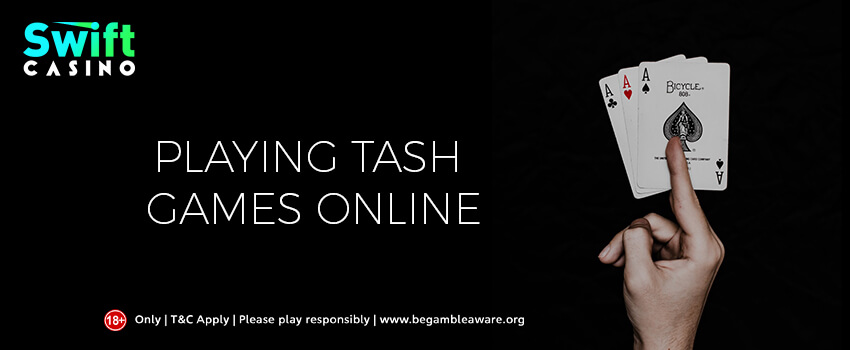‘Tash’ is the Hindi word for cards, or more accurately ‘playing cards’. Tash games are basically card games.
Most tash games and card games in general are played with the French-suited, standard 52 deck. Every deck consists of four suits of cards: Spades (Hukum), Hearts (Paan/Dil), Clubs (Chidi) and Diamonds (Eent).
Each suit has 13 cards. And then there are Jokers. Jokers can be found in various numbers ranging from one to six. But Indian tash games generally have two of them.
Tash games don’t just offer fun and enthusiasm, they also develop highly intricate strategic skills. You’ll need to plan your moves and read others’ minds, guess their hands and may even have to analyze their body language. Tell me that doesn’t require skills?
Tash has always been very popular here in India. And we are not the only country that loves playing around with these cards. Card games are played by millions of people in more than 80 countries.
They can be a fun indoor game to play with family and friends, can be a way to relax for some pros and always sets you up in a competitive mood.
With the rise of the internet of things, you can play many Tash games from the comfort of your home nowadays. Tash games has become one of the most popular internet games and the market continues to grow.
Tash games are a part of our traditions. And the nature of the games are such that you can play it anytime anywhere, whenever the mood is nice. They are good fun to bond with family and friends. You can even kickstart your parties, functions and other celebrations with these, as they are loved by people of every age and gender.
Tash games have enjoyed immense popularity in India for quite a few generations. Now, they have even caught up with modern technologies.
Online tash games have witnessed an unprecedented outburst in this pandemic. Here at SwiftCasino, we invite you to try tash games and experience an euphoria like never before.
History of Tash and Card Games
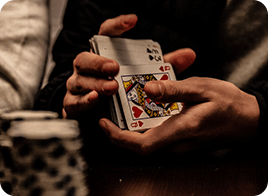
The earliest mention of playing cards can be found in Chinese literature of the 10th century. But nothing is known about their markings or the kinds of games they were played with.
In Europe, playing cards first were introduced in the 1370s, most probably in Italy or Spain. They were imported by the merchants coming from the Mamluk dynasty of Egypt. And similar to the originals, early European cards were hand-painted too, and was considered to be a luxury item. Even the account book of France’s King Charles VI describes them as an amusement for the king.
Then came the Germans. This time, it was for good reasons though. In the early 15th century, they invented wood-block printing that considerably reduced the price of production. It was further reduced by the French invention of stencils in the 1480s. They simplified the design of suits (Pique- spades, Coeur- hearts, Carreau- diamonds and Trèfle- clubs) which is now the International standard.
As the cost of cards plummeted, the appeal of card games became more prominent. It charmed all and sundry with its inherent advantages over other indoor games. Cards even lent themselves to the constructs of other games like chess and multiplayer gambling with dice. And to this very day, cards are played for money.
It even transpires the sassy, the more salacious parts of history. As playing cards is an indoor game, it held much more appeal for women. And thus European literature and paintings are rife with a consortium of cards and seduction. Many church authorities denunciated card playing at that time, but the game hasn’t gone anywhere.
The games of cards or tash first reached India in the 16th century through Mughal emperors. They were admirers of the game “Ganjifa”. The word ‘Ganjifa’ comes from the Persian word ‘Ganjifeh’ which means ‘playing cards’. The earliest reference to the game can be found in ‘Baburnama’, the biography of Sultan Babur, the founder of the Mughal dynasty. ‘Ganjifa’ was a court game, played with sumptuous sets of cards, ornamented by ivory or tortoise shells and a multitude of precious stones.
It was much much later that the game of card spreaded to the ordinary people of India. The inexpensive decks of cards that became commercial were primarily made out of palm leaves or wood. With the British raaj and Industrial revolution, the modern cards made of paper came to the fore. And from then on, they have remained constant in our gaming traditions.
There’s also an Indian legend about the game of cards. It’s kind of a fable that provides a funny story behind the creation of cards. The story is ultimately about the royalty and female boredom within those chambers.
According to the Hindu legend, the wife of some Indian King was pretty bored and irked by the king’s habit of constantly pulling the hairs of his own beard. Thus, the wife conceptualized the game of cards just to keep the king’s hands engaged in some other activity and to entertain herself along with her husband.
Different Tash Games You Can Play Online
Rummy
Rummy is one of the most beloved and famous tash games in India. As it has become available online, its popularity has skyrocketed. It’s a game of skill that requires quick thinking and strategic nous to be successful.
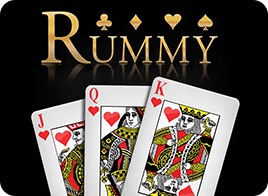
Rummy has been adored in India for centuries. Its reach is unsurpassed and its popularity has been unwavering because it’s very easy to learn, and entertaining in equal measure. Many mega tournaments are held every year where players from all over India compete for a huge sum of money.
Rummy can be played with any number of players between 2 to 6. First, each player is dealt 13 cards from two packs of cards. The game has two joker cards, one printed and one assigned with an arbitrary value.
You need to arrange 13 cards in genuine sequences by picking and discarding cards. Only when one player can arrange 13 of these cards in two valid sequences, he wins. But there’s another twist here. The winner needs one pure sequence, at least.
You need to understand and memorize every rule to help you make fast and knowledgeable decisions. The game is about outwitting your competitors. You should avoid high value cards such as Aces, Kings and Queens.
These can increase your burden in case any player declares before you. You should concentrate on getting cards to make a pure sequence, right from the outset.
There are different rankings for various hands in this game. Some of the best sequences that you can get in your hand are:
- Pure Sequence: 3 or more cards that belong to the same suit on the trot. But the joker isn’t allowed in this sequence.
- Impure Sequence: Similar to a pure sequence, it consists of 3 or more cards from just one suit. But the main distinction is that any of the joker cards can be used as a replacement to achieve the needed sequence.
- Sets: 3 or more cards whose value is the same. They can belong to different suits of cards. Any joker card can be used to complete the set.
Rummy has some variations up its sleeve that will need faster interpretation, strategizing and proficiency like:
- Pool Rummy: In this variation, the pool becomes your entry fee to join the table. The winner of the game gets the whole pool.
- Deal Rummy: All the players get chips that are assigned to them right at the start of a deal. It’ll be pre-decided how many deals would be played.
Every deal will have a winner, who gets all of the chips. But the game isn’t over. The one with the most chips at the end of all the deals becomes the ultimate winner of the game.
- Points Rummy: It’s a variation that’s centered around a fast pace of playing. Players get points at a certain rate that would be agreed by all before the game. This is how the winning amount (given in cash) is decided: the rupee rate of each point multiplied by the total sum of all the players.
Teen Patti
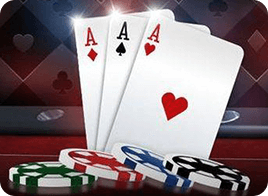
Teen Patti means ‘Three Cards’ in Hindi language. It’s an Indian tash game that has its roots in the English card game, the ‘Three Card Brag’. It also has some uncanny similarities to poker. Therefore, it’s also called ‘Indian Poker’.
You should play the game as a blind player for as long as possible. Most players start as blind in early rounds. Some anxious players get tense and want to see their cards as soon as they can. Confuse them with some confidence.
If you’ve got good cards, don’t place any big bet. Other players with weaker hands will ultimately fold and you will win the pot, albeit a smaller one.
Try to keep your emotions and expressions blank and your body language self-assured. That way, you’ll become difficult to read and more difficult to beat.
This game is usually played by 3 to 6 players and with a standard deck of 52 cards, there’s no joker though. The dealer provides three cards to every player one by one. A minimum wager is decided before starting the game. There will be a pot, in which every player places the minimum stake.
The whole premise of this game is about trying to guess and then put a wager on who may have the best sequence of cards. To achieve that, players can select two modes of play: ‘blind’ or ‘seen’.
A Blind Player’s cards are face down and he never sees his cards. His wager has to be equivalent to the current stake but no further than twice of that.
A Seen Player has already watched his hand. He makes his stake after that. So, his stake has to be at least double of the current bet but never further than four times of the ongoing current stake.
The betting starts in clockwise movement from the dealer himself. Every player puts another bet in that pot according to their stature of being a blind or a seen player. If any blind player chooses to look at his cards, then from that moment, he will be considered as a seen player. His stake will automatically become double the amount.
Any player can choose to fold if he opts not to pay, but then he gets eliminated from the game. The player also loses every rupee he has placed in the pot. The rounds would continue to roll on until one of these scenarios happen:
- Just one player is alive and all the other ones have folded. That player wins the whole pot, whatever his hand was.
- There are two players left. Any of them can choose to pay for a Show then. Both of the players show their hands and compare. The better sequence wins.
But there are certains rules for a Show:
- If any blind player wants a show, he has to pay the current stake for a show. It’s insignificant whether the other player is a blind player or a seen player.
- A seen player cannot demand a show if the other one is playing blind. The only options for him are to play on or to fold.
- If both of them are seen, then any one of them can pay double of the current stake to demand a show.
- After a show, the player with a higher ranked sequence wins the whole pot. But If their ranking is exactly the same, then the player who paid for the show loses the game.
There are rankings for every hand in Teen Patti. Some of the best sequences are:
- Trio: 3 cards of same value but from different suits.
- Straight run: 3 consequent cards from the same suit.
- Normal run: Similar to straight run, but the suits are different.
- Color: All cards from the same suit and with the same color.
- Pair: 2 cards of same value but from different suits.
- High card: 3 high-value cards of different suits excluding above sequences.
There are some popular variations of Teen Patti such as:
- Joker: In this variation, one card is pre-decided as the Joker. Now, the Joker from any suit, of any rank, can become a substitute.
- Muflis: This teen patti variation makes the ranking completely opposite of the original game. Here, the lowest hand is the winner.
- AK47: The ‘A’, ‘K’, ‘4’ and ‘7’ from every suit become jokers. So, every hand can have more than one jokers, and multiple substitutions.
Poker
It’s a great combination of luck and strategy. It is an established casino game that’s played privately in households too.
Hollywood has always been fascinated with the game of poker and all of its variants. And very rightly so. The roots of this game can be tracked down back to the USA. It has been featured in countless American movies and TV shows.
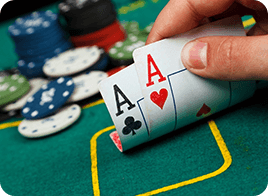
But this love for the game is getting global, thanks to the online casinos and websites that let global citizens have a taste of this addictive game.
In poker, your gambling persona will win you half the battle. So, when you bluff, do it rightly so that your opponent doesn’t see through you.
Take a small break if you feel that your emotions are getting the better of you. You’ve surely heard about poker face. Well, it is what’s needed to play this game.
Always know the odds of your hand, and listen to your gut or sixth sense. If there is an iota of doubt or a foreboding about the hand, then it’s best to fold in the early rounds.
The ranking of heads is everything in poker. Here are some important ones:
- Royal Flush: All of the cards belong to only one suit.
- Straight Flush: All the five cards in a numerical order, and belong to one particular suit.
- Four Of A Kind: Four cards of matching rank. The fifth one, called the ‘kicker’ doesn’t determine the rank of this hand.
- Full House: Three cards of matching value. Two other cards of a different but identical value.
- Flush: Five cards from one suit, can be of any value.
- Straight: Consequent five cards in a numerical order but of different suits.
- Three Of A Kind: Three cards of matching value. Other two cards are completely unrelated.
- Two-Pair: Four cards in two pairs from any suit.
- One-Pair: Identically ranked two cards, and three cards that are unrelated.
Traditional poker is played between 2 to 7 players. Two cards are dealt to each player starting from the person to his left, who’ll start every round.
All the players have two modes of playing: Bet (putting money) or Check (doing nothing). If any one of the players opt to place a stake, then all the others can have these opportunities: call (equalling the wager amount), fold (dropping from the game), raise (making a larger bet to force others to equal it or raise again to be alive in the game).
The round goes on until everyone has had their chance or all the bets are placed in the Pot. When the first round’s betting finishes, the dealer comes up with 3 more cards, face-up on the table. They are called ‘community cards’. Anyone can grab them. This process is called ‘flop’.
Another round of bets get underway. After each player gets their turn, the dealer puts forward a fourth card that anybody can have. This is called ‘turn’.
Then again, after everybody is done for that round, the dealer puts a fifth card. And even that’s up for grabs, anybody can have it. This is called ‘river’.
And then the final round of betting or folding gets completed. If multiple players are still alive in the game after the final betting round, all the cards are revealed and the player who has the best hand wins the entire pot.
Just like any other card game, poker has many variants too. Few of the most famous ones are:
- Texas Hold’em: The players are given only two cards at the start. Then the dealer puts five cards on the table. The first three get turned to face-up in the second round of betting. The fourth card is revealed in the third round. The last card gets turned in the last round of betting.
- RAZZ: The original ranking is turned upside down. The player who has the lowest hand wins the game.
- Omaha: Almost identical to Texas Hold’em. But the difference is that the four cards are dealt to the players at the beginning rather than two.
Bluff
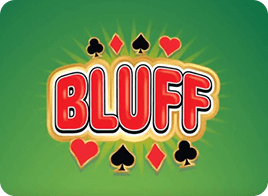
Bluff is called by a couple of very interesting names like BS, cheat etc but perhaps doesn’t deserve this derogation.
The game requires an astutely expressionless face, mastery in reading other people and whether they’re lying or not, and a fair bit of luck. But what is gambling, if it doesn’t involve luck?
Bluff is a game of strategy as much as it’s a game of chance. You need to analyze your opponents’ behavior and identify their bluff. It’s one of the most exciting tash or card games that’s sure to keep you high-strung at all times.
You can play bluff with four cards, but the fewer you use the better your chances. When you bluff with four cards, it’s highly improbable to get all four 2s. So, arrange and group your cards, from the lowest value to the highest value.
Bluff can include any number of players from 3 to 10. There’s one pack of cards only in this game and no jokers are allowed.
The dealer shuffles the cards, then distributes them as uniformly as possible. It’s okay if any player is one card short or some other has an extra one. You can look at the card, then keep it in privacy.
The player with the Ace of the Hearts places it face up at the center and kicks off the game.
The game then moves clockwise from that player. The next player can place a number of 2s to his discretion (the value of the card that can be of any suit) on that ace face down.
Then he’ll announce how many of the 2s he’s placed. If the player is without any 2s, he has to pick other ones and try to bluff. This continues in the same vein. The next player puts 3s, then the following one hands out 4s and so on and so forth.
When any player puts forward an Ace, the value of the cards turn back to 2 again.
Any player, at any point of time, can call a bluff, after all cards are put down on the table for that round.
If the challenger is right and it was a bluff, then the player who did the bluff will have to take all the cards of the center pile.
But, if the challenger gets it wrong, and the player didn’t really bluff, then it’s the challenger who would have to take all the cards from that pile.
The game rolls on like this until one player’s cards run out. When a player has no more cards with him, that player is declared the winner.
Bluff is an easy game to understand, but very hard to master. This age-old game doesn’t have many variations. Probably never needed them. But there’s two that really make a mark and they’re:
- I Doubt It: This version gives you an option to pass your turn if you don’t have any matching cards to the announced ones. The game goes on till all the players pass, and that means no cards of the same rank are left anymore; or till a bluff by someone is rightly called.
- Two-Player Version: As the name suggests, it’s played with two players only. Almost every rule is the same as the original and it too has the option to pass. The twist here is an element called ‘force’.
After your turn, if the opponent says force, you must put forward another card of matching value or rank. And if you fail to do that, you’d have to take up all the cards in the pile. But if you show up the right card, then your opponent must collect all those cards.
Three Two Five
If you’re looking for a simple and fun tash game, then “Three Two Five” is your best bet. It’s been popular among children in the sub-continental countries like India and Pakistan for many years now.
It has a couple of different names like ‘5-3-2’, ‘Teen Do Paanch’. This card game has no betting in it and it acts like a fun-filled family game.

Remember that you have an option to choose a trump card. So, look at your hand and observe in which suit you have the most number of cards.
It can be played with three players only. It uses a single pack of cards, but even 30 cards are enough to play. However, the Aces, Kings, Queens and Jacks of every suit must be included. All the ‘10’s, ‘9’s, ‘8’s, and the ‘7’ of Hearts and Spades must be there too.
First, the dealer must be chosen. He’ll place three cards ranked three, two, and five face down. Every player picks up a card from there. The game goes anti-clockwise from the dealer.
The game starts when every player has been dealt five cards. Everyone can see their cards. The player on the far right announces his trump card.
Then the dealer hands out three cards, and then two more cards. Every player will get 10 cards in total.
The play starts from the dealer’s right side. That player puts down a card. Then the other players have to put forward higher-value cards that belong to the same suit to win the hand in question. This is called a ‘trick’ (the person with the highest card in the pile of cards in the center wins all the cards).
If the player has no card of matching suit, he/she can put down a trump card and win the whole trick. Though his trump card has to be the highest ranked to win the trick.
And after 10 tricks are achieved, the players decide if they have won the necessary number of tricks which is 3, 2, and 5 respectively. If everyone has got the required number of tricks, then the game continues.
If any player can’t meet the requirements, then the player with the most tricks in his account can pull out any card he wants from their hand. The pick has to be unseen though. Other players would not know which cards were interchanged.
There is no strict finish line to this game really. You can keep on playing, by increasing the number of the tricks required. Or a score can be kept. For each trick, players can be given one point. The player who gets the best score will be the winner.
There are some variations of this game, such as:
- No Trump, No Deal: If any player doesn’t have any trump card, he can declare it. He must show his hand to the others and his hand will end immediately. All his cards go back to the center. The dealer first shuffles the cards, and then deals them again.
- Ten-Trick Bonus: This can only be applied, if you keep scores. When a player achieves 10 tricks, he receives a bonus: 5 extra points.
Bridge

It’s one of the most loved tash games in India and all across the globe. There’s been innumerable books written about it. It’s so special that even the academics couldn’t resist its charms.
Bridge tournaments happen in many countries and they’re generally flooded with competitors. You have to make informed choices and think about your moves beforehand. Indecision is the arch-enemy of bridge players.
The declarer should never get to know what exactly you have. Also, decide in advance which card you want to play, when the declarer leads a suit.
Bridge has a unique ranking system of its own. The ranking of suits goes from Spades which is the highest, to Hearts, then to Diamonds and finally Clubs. The ranking of cards goes as follows: Ace (highest), “K”, “Q”, “J” and then the numbered cards with “10” as the highest and “2” the lowest.
The game of bridge is played by four participants. Then, two teams are formed with two players in each of them. The teammates sit opposite or face-to-face with each other.
It’s played with just 13 cards. A game of bridge is won by getting tricks. The player with the highest ranked card wins, and that’s one trick.
The main purpose is to score through bidding, and then winning a pre-decided number of tricks the earliest. All of them can look at their cards and then the bidding is initiated by the dealer. There are four types of bids:
- Pass: If a player has no desire to bid, they can say pass and pass on that round. If all the players pass the bidding, the dealer has to start another hand from the start.
- Bid: When a player puts in a bid, that means he has to declare the number of tricks needed to win. It ought to be higher than six. Also, the player will declare his trump card and the suit it belongs to. This trump card would always outrank the card which has the highest value otherwise.
- Double Bid: Players can double their last bid, only if an opponent called it previously.
- Redouble bid: Players can redouble the last prevailing bid if the opponent previously doubled it.
The bidding gets closed when three successive passes come after any kind of bid. Then, that final bid is called a ‘contract’.
The first bidder becomes the declarer. The teammate of the declarer is called the dummy and their opponents become ‘defenders’.
Every player’s cards will be discreet to the others. But the dummy has to put down his hand face up. Every card should be clearly visible after being arranged according to the suits. But the declarer has the capability to put cards on the dummy’s behalf.
Each player takes his turn to put an appropriate card at the center. The trick is won by the player who puts in the highest ranked card. That player has the power to lead with any kind of card in the very next round.
This continues until the 13th card is placed. Then, the total number of tricks of each team are summed up. If the number of tricks in accord with the contract can’t be matched by the declarer, all the points go to defenders.
There are many variations of bridge games. Here are two of them:
Chicago Bridge: A fast and fun rendition of the original game. Only four cards are handed out, and there are only four hands to win it.
Honeymoon Bridge: Usually there’s two people on any honeymoon. Thus, this variation of the game is played with only two players, as the name suggests. No teams, each one fights for his own survival.
Satte Pe Satta
There’s no way you say the name of this game, and don’t instantly get reminded of the namesake Bollywood classic. But it’s actually a tash game that’s been here much before the film came into theaters.
The game is called ‘Sevens’ in English. It’s also called ‘Fan Tan’, ‘Dominoes’, or ‘Parliament’.
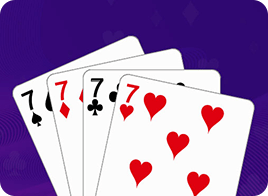
If you want to increase your chances of winning this game, don’t waste your 7s, 6s, and 8s right at the start. If the other players are unable to get rid of their cards, you’ll have the last laugh.
Satte Pe Satta can be played by 3 to 8 players and it needs a 52 card pack. Each player ideally gets dealt a corresponding number of cards. But it’s fine if a player is dealt an additional card or one less.
Your cards should be arranged by suits first. Then again in the numerical order. Each round will start with 7 of Diamonds. The player in possession of it begins the game by putting it on the table.
As far as the next card is concerned, it must be one of these: ‘6’ below or ‘8’ above ‘7’. That’s the sequence to look for. Another layout can be initiated only if a player has “7” from any suit.
One single card is thrown at each turn. The next has to be in accord with the ones already thrown. If a player has no appropriate card to put forward, he can pass that turn.
This will continue until one player is left with no cards at all, and then he becomes the winner.
BlackJack

Blackjack is a fine game of finer chances. It is hugely popular in many Western countries. It has been featured in many films from the ‘James Bond’ franchise. The most significant of the lot would be Daniel Craig’s 2006 blockbuster ‘Casino Royale’.
When you love Blackjack, you may find yourself brooding, smirking and flirting around the table too, just like Mr. Bond is used to doing.
To win the game, avoid making the insurance bet if you can. It is lucrative, but much less probable. You may lose more than you have. Also, ignore the strategies of other players in placing their bets. Focus more on your cards and don’t get influenced.
Blackjack is usually played by 2 to 7 players. The number of packs needed differs too. In some casinos, six decks is the preference of the dealer, but it’s entirely possible to play even with just four decks. This is done to eliminate counting of the cards.
The goal for the players and even the dealer is to get to 21, from the cards that have been dealt. 21 is blackjack. The only ways a player can win are: 1) Beat the dealer, or 2) Get the blackjack.
The score for face cards (Kings, Queens, Jacks) are 10 points, Ace can be either 1 or 11 (pre-decided) and the rest of the deck are taken at face value.
Bet: It’s a proper betting game. So, the players need to place their bets with confidence. The various people on the table can decide the limits, the most and the least a player can bet. The bets must be declared before the cards are given by the dealer.
Dealing: Two cards are dealt face up to every player, one at a time by the dealer. The dealer himself will put one card face up and one turned face down.
Gameplay: The game is started by the player who’s at the left of the dealer. He and every player after him can choose one of these 4 actions:
- Stand – no card is asked for.
- Hit – cards have been asked for to get close to 21.
- Doubling Down – on having a powerful hand, a player can put a bet equivalent to their original bet. But they will get one card this time face down. It’ll be turned face up only after the bets are done and the hand has ended.
- Splitting Pairs – if both the cards of any player are of same value, they can turn them into two different hands. But they have to put a bet matching the original bet from the other hand.
Insurance: If the face up card of the dealer is an Ace, then any player can put in a side bet, that’s half of the original.
This means that if the dealers’ face down card is a 10 card, the dealer will get blackjack. After all the bets are done, that second card is flipped by the dealer.
If it turns out to be a 10 card, then those players with the insurance bet will win twice the amount of that half-bet. If that happens, the hand is finished. Then, all those main bets are accumulated.
Settlement:
- Each player gets the amount of their bet, if the cards of the dealer get over 21.
- If the cards of the dealer get to less than 21, then he has to pay the bet of the player who has a higher total than him. Though it’ll never surpass 21.
- The bets of those players who have lower scores are collected by the dealer.
- Any stand-off between the player and the dealer for matching totals will be solved by a payment exchange.
Some well-known variations of the Blackjack are:
European Blackjack: The rules are mostly the same as the classic blackjack. The only point of difference is that there are only two packs of cards used.
Spanish 21: The four ‘10’ cards are removed from the deck. You have to reach 21 with the rest of the pack. And the dealer can take a peek at his hand too.
Mendikot
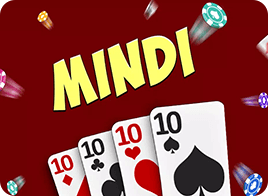
Mendikot is a tash game from the western states of India, especially Maharashtra and Gujarat. It’s a card game that’s steeped in local tradition and history.
The aim of the game is simple enough: accumulate the maximum number of 10-value cards. But if you have a 10, then use it wisely. Calculate if the suit is right and if your 10 is the highest value in the trick. It’s a fast and easy game that can cheer you up every time.
This game needs four players, who then are split up in two teams. It can be played with any standard deck.
After shuffling the cards, one card is picked up by each player. The player who has the highest ranked card becomes the dealer. The players with the highest ranked cards can be one team and the players with the lowest ranked cards can make the other.
The dealer then shuffles and then deals five cards to each player for the first time, and then continues dealing four cards each time. Mendikot has a trump card suit. The player at the dealer’s right side chooses a card and all the cards from that suit transform into trump cards.
This player starts trick number one. All the other players must throw cards that are higher ranked in comparison to win this trick. If a trump card is put forward, then the highest ranked trump wins.
Mendikot is a very unique tash game. The game is won by the side which has maximum 10s. And when a team grabs all four 10s, it’s called mendikot.
Mendikot can be played by even six or eight players. Every player has to sit between two opponents in this form of the game.
There’s another variety of this game popular in the Northern states of India. It’s called ‘Dehla Pakad’. The main difference is that you’d only need to win two back-to-back tricks to win the game.
Seven Eight
Indians love their tash games. The game of Seven Eight has been a part of Indian households for a few centuries now. And the fun never really stops.
This game is played out in a similar way as a game previously mentioned- Three Two Five. Only point of difference is that this is played by two players. One of them must get seven tricks and the other one, eight.
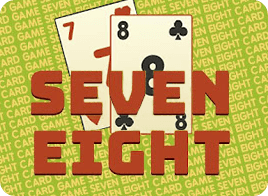
If one player doesn’t get that many tricks, the other player automatically wins.
One player deals the cards. The other one gets to select the trump card. The roles get reversed after every game.
Same as Three Two Five, this game has 30 cards available too. Both of the players get 10 cards each. The dealer must get seven tricks. The other player who decides the trump cards needs to get eight tricks.
The player puts forward a card followed by the dealer. The player who has the highest ranked card wins the trick. This is how the game continues until all of the 10 cards get used.
Seven Eight can be called more of a modified version of “Three Two Five”, rather than being a whole different game. However, it enjoys equal popularity in India.
How to Play Tash Games in Swift Casino
Here at SwiftCasino, we’ve everything to ease your way into online tash games. Just follow these steps:
- Register yourself at the website with a valid email address.
- Select any amount to deposit and make a deposit.
- Apply the bonus code “SWIFT” and get 100% bonus up to 50,000 rupees.
- Select any game of your choice and get immersed in the gameplay and the thrill of the game.
Benefits of Playing at Swift Casino
Playing with your friends and family can be a lot of fun. But our online version is more packed with competition, provides you a full-on professional experience and you don’t even have to step foot outside. There are some more benefits to our online tash games:
Game responsibly: Gambling is a form of entertainment, and can be a source of enthralling sensations. But here at SwiftCasino, we want you to enjoy it responsibly.
We don’t want you to fall victim of gambling addiction, in return for some quick bucks.
That’s why we have introduced deposit limits, time limit control, reality check messages, self-assessment tests and all-round monitoring, just to make you safe.
But it’s your responsibility too, to be healthy and then wealthy.
Host of opportunities: Once you enter SwiftCasino, there’s an array of games to try your hand. Not only tash or card games, we operate an exquisite live casino. Make sure to check that out.
There’s Roulette and jackpot games too. Want to keep on playing on a mobile? We’ve a mobile casino built just for that.
Payment methods: We’ve every kind of payment method available under the sun, to make it quick. All the fun, all the thrill can fade away if your prize comes too late to celebrate.
There’s UPI, NetBanking, Mastercard and VISA support for fast uninterrupted deposits and withdrawals.
Tash or card games have always been adored and considered as a way of bonding in India. All these various games have been popular for centuries.
But now, with the advent of the internet, the game has gotten easier to play, with substantially more rewards. You can enjoy a high quality casino environment, sitting in your home. That’s where SwiftCasino comes in too.
We are determined to offer you the best experience while playing card games, or any online casino game for that matter. The games of cards have an element of luck or fate inherent in their nature.
Join us, and you’ll know just how far your luck can take you. And meanwhile, we’ll be there for you, helping you to obtain the skills to complement your luck.

